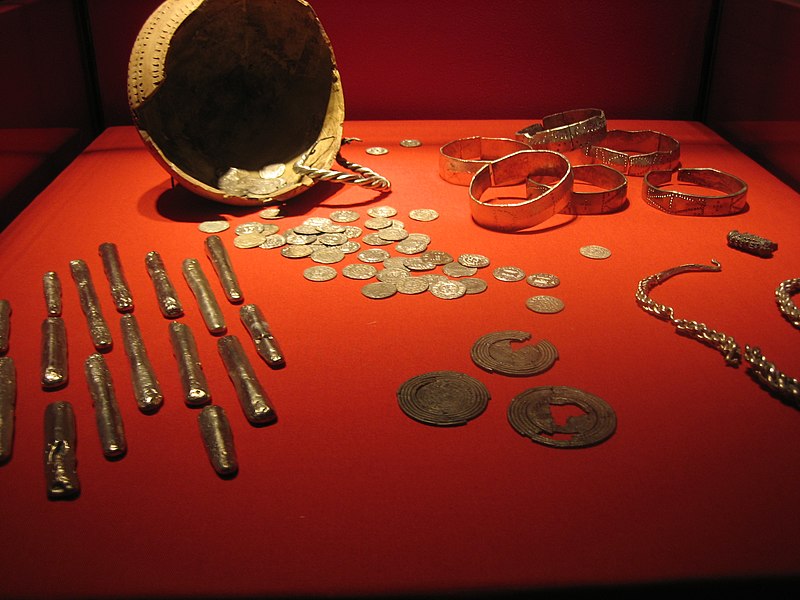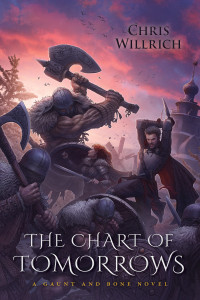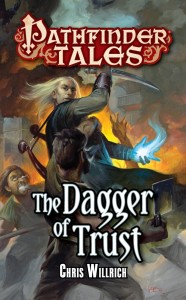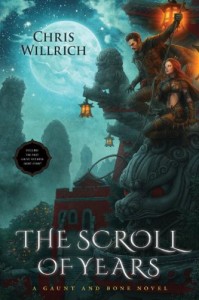
Viking treasure at the Rijksmuseum van Oudheden. Photo by Marieke Kuijjer.
I’ve been thinking a bit about where the adventurers of sword and sorcery might fit into real world history. Even though my characters Gaunt and Bone inhabit an imaginary world, it’s fun to try to ground their surroundings in the real.
So, as a working definition, you could say that sword and sorcery is about individual action, involving physical danger, in a fantastic context.
The two formative examples are Robert E. Howard’s Conan, wandering an ancient world just beyond the historians’ grasp, fighting all manner of warriors, wizards, and monsters; and Fritz Leiber’s Fafhrd and the Gray Mouser, traipsing across the dreamlike realm of Nehwon or through the smoky alleys of Lankhmar, looking for gold and trouble. Both these sagas began with short, episodic tales in pulp magazines, and while there’s a chronology, there’s rarely the sense of an overall plan, as with J.R.R. Tolkien’s The Lord of the Rings and its chronicle of the War of the Ring.
Keeping things short and punchy, Howard and Leiber set the tone for a subgenre that’s more interested in individuals than in the fates of nations. This kind of storytelling calls for characters who can believably wander from place to place, getting into danger. Both Howard and Leiber drew on the classic motivations of treasure and a yearning for adventure. These aren’t the only possible motives. Characters could be agents or pawns of governments or magical powers (indeed, some of Leiber’s stories introduce that element). They might be under a curse, or seeking some elusive person or secret, or hoping for enlightenment. But greed and wanderlust are classic motivations, with plenty of parallels in real-world history.
This brings us to the hoary image of the “barbarian” of the northern wilderness, roaming south to seek the treasures of more civilized lands. Conan is the obvious example here, but Leiber’s Fafhrd also fits the bill. (An interesting difference is that Conan mostly stands apart from the peoples he encounters, while Fafhrd fits right in.)
These are fantasy figures, but it’s a fantasy with a thin thread of historical fact. In researching real-world history to give a little verisimilitude to my Gaunt and Bone series, I’ve encountered tales of Genghis Khan’s warriors seeking the wealth of the Silk Route, and of Viking-era traders and plunderers. The image of treasure-seeking northerners looking for adventure in the south has stamped itself on the world’s imagination.
Conan even makes a cameo in Christopher I. Beckwith’s informative book Empires of the Silk Road — though Beckwith takes modern writers to task for using the term “barbarian” —
“It must be understood that neither the name barbarian nor the idea behind it is applicable to the peoples to whom it has been applied either historically or in modern times. The entire construct is, appropriately enough, best summed up by popular European and American fiction and film treatments such as Conan the Barbarian.” (P.356)
Barbarian, Beckwith argues, has a very specific origin in ancient Greece’s view of some of its neighbors, particularly the Persians — carrying a bundle of meanings including “fierce,” “skilled,” “different in culture,” and “not speaking our language” — and doesn’t really belong in scholarly discussions outside that narrow context. It misleads more than it illuminates.
Out of respect for that argument, let’s instead talk about “adventurers,” a more universal concept. A fascinating idea that’s developed in Beckwith’s book is that of a Eurasian cultural complex that extended from the steppe peoples all the way into parts of Europe. Its elements included adventuring war bands and a culture of giving rich gifts to one’s comrades. Beckwith writes,
“The most crucial element of the early form of the Central Eurasian Culture Complex was the sociopolitical-religious ideal of the heroic lord and his comitatus, a war band of his friends sworn to defend him to the death. The essential features of the comitatus and its oath are known to have existed as early as the Scythians and seem difficult to separate clearly from the oath of blood brotherhood to death, which is attested from ancient sources on the Scythians through the medieval Secret History of the Mongols.” (P.12-13.)
This is intriguingly similar to accounts of Vikings I’m currently reading in Anders Winroth’s The Conversion of Scandinavia:
“When the warrior received a gift of something valuable and prestigious from his chieftain, he was required to give a countergift. His first countergift was his loyalty, unto death if necessary. This is how relationships of power were created in a society without states; rather than being obliged to perform military duty for his king (as in a full-fledged state), the warrior was persuaded by gifts to voluntarily perform that duty for his chieftain. The asymmetry of the interchange, with the chieftain giving more valuable gifts than the warrior, was an expression of the structure of political power: the more exclusive the gift, the higher the esteem of the giver, and the more power concentrated in him.” (P. 45.)
Both Beckwith and Winroth cite the medieval poem Beowulf, with its images of feast-halls and gift giving, as illustrative of these ideas. Meanwhile in Jack Weatherford’s The Secret History of the Mongol Queens, there’s this example of what such gifts meant in the environment of the steppe:
“The steppe alone lacked the resources that Genghis Khan needed to keep his followers happy. Now that the people had peace, milk, and meat, they longed for something more: for tangsuqs, those rare trinkets such as gems, golden and silver ornaments, and decorative baubles for their tents, horses, and themselves. In addition to the luster they provided, every item conveyed some spiritual property from its presumed place of origin, and the farther the tangsuq traveled, the stronger this essence, and therefore its beneficial power, became.” (P.44.)
So, it’s interesting that for these cultures, trading and raiding weren’t simply about improving your finances. They were about prestige and a need to keep providing one’s key warriors with luxurious gifts. There was a real interest in treasure as treasure, rather than just as easily moveable wealth. It’s not hard to see a classic fantasy adventuring party in this image of the warband.
I’m fascinated to find that sword-and-sorcery adventurers, in this one respect, are a little more grounded in history than I’d thought. One big difference, of course, is that the historical adventurers did not want to roam forever, and often hoped to build up a power base (at which Genghis Khan, of course, was spectacularly successful.) Meanwhile the protagonists of sword and sorcery rarely seem to have homes — or not for long, anyway. I suppose rootless characters such as these would be unlikely to appear in the scrolls and runestones of history. But maybe in such sources we can catch a fleeting glimpse of what they would be like.










